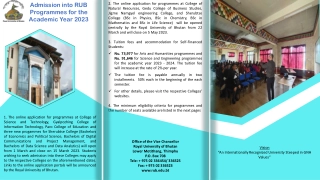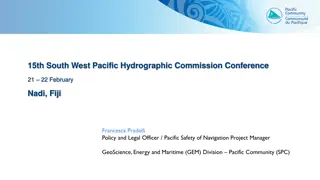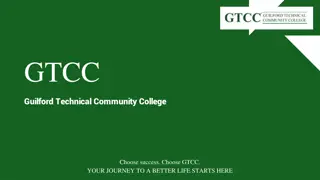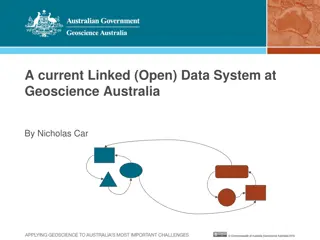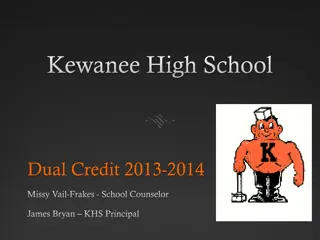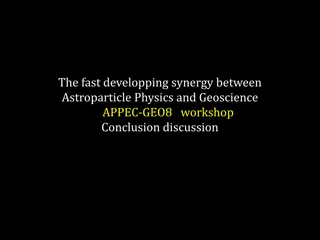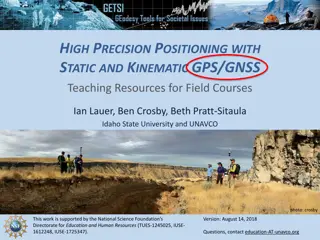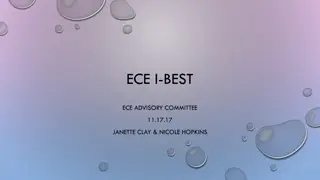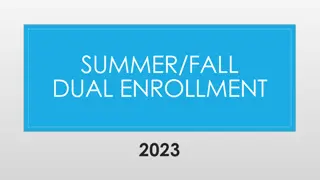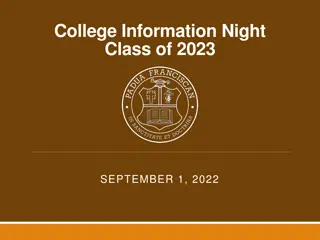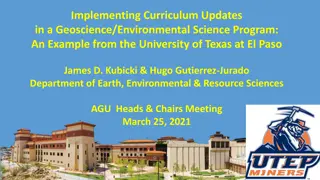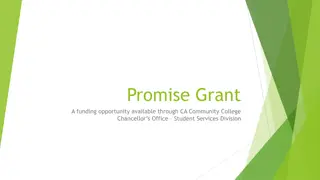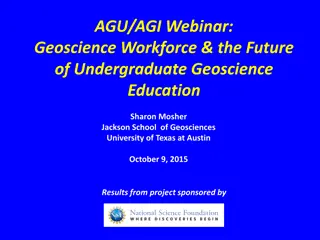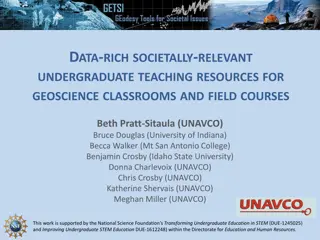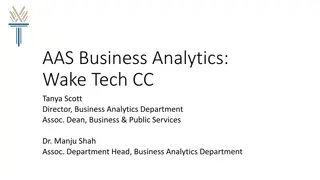Geoscience Program Overview at Highline College
Geoscience program at Highline College offers a Geology pathway with various courses and options for students to transfer to 4-year universities in Washington. The program includes multiple touchpoints and pathways, with common courses like Mount St. Helens and Seattle Fault. Faculty consists of tenured, non-tenured full-time, and adjunct instructors.
Download Presentation

Please find below an Image/Link to download the presentation.
The content on the website is provided AS IS for your information and personal use only. It may not be sold, licensed, or shared on other websites without obtaining consent from the author.If you encounter any issues during the download, it is possible that the publisher has removed the file from their server.
You are allowed to download the files provided on this website for personal or commercial use, subject to the condition that they are used lawfully. All files are the property of their respective owners.
The content on the website is provided AS IS for your information and personal use only. It may not be sold, licensed, or shared on other websites without obtaining consent from the author.
E N D
Presentation Transcript
Describing Your Geoscience Program: A Visualization On a big post-it note, describe the geoscience program at your institution. 1. 2. Geoscience at <name of your college/campus> Illustrate the structure, components, and size of your geoscience program as it is (even if different from how it might be on the books ). Focus on courses, not extracurricular activities Add geoscience courses taught by other programs/departments and indicate that in your visualization Indicate programs that require or recommend one or more of your courses Include number of faculty Illustrate the various student pathways and touchpoints as students pass through the geoscience program, noting any known patterns about these passages. For example, students: completing a transfer pathway in geoscience - include the most common transfer schools completing an AAS or a workforce degree or certificate program completing other degree programs that require or recommend a geoscience course fulfilling gen ed requirement(s) 3. Consider how you might use the resulting visual to introduce your program to your administrator and others.
Geosciences at Highline College Pathway Touchpoint Transfer to a 4YCU geoscience program in Washington, most often CWU and WWU General education (math/science, lab, science requirement) Transfer not in geoscience Geology Program Typically no Assoc. Degree Students often take a second 100-level geology course. They can take courses in any order. Supporting science courses (Math, Chem, Physics) One-credit field courses Mount St. Helens Seattle Fault Geology of the Cascades Puget Sound Geology Seattle Landslides Fire, Fault and Floods (many students take several or even all) 100-level courses with lab: Geology and the Environment, Physical Geology, Intro to Paleontology, Local Environmental Issues Second geology course 100-level courses (no lab): Shaping the Earth, Earthquake!, Geologic Catastrophes, Global Climate Change and Introduction to Field Methods First geology course Geoscience Courses in Other Departments: Oceanography, Global Environmental Issues; Physical Geography 100-level Cooperative experience (Internship) Faculty 1 tenured, 1 non-tenured full-time, 2-3 adjunct
Geosciences at Highline College: Geology Program Pathway: Students take 2+ Geology 100-level courses (any order) Supporting science courses (math, chem, physics) skip the assoc. degree transfer to 4YCU in Washington (most common destinations are CWU and WWU ) Bachelor s degree Faculty 1 tenured, 1 non-tenured full-time, 2-3 adjunct Geology Courses Students often take two 100-level geology courses. They can take courses in any order. One-credit field courses many students take several or even all: Mount St. Helens; Seattle Fault; Geology of the Cascades; Puget Sound Geology; Seattle Landslides; Fire, Fault and Floods 100-level courses (no lab): Shaping the Earth, Earthquake!, Geologic Catastrophes, Global Climate Change and Introduction to Field Methods 100-level courses with lab: Geology and the Environment, Physical Geology, Intro to Paleontology, Local Environmental Issues 100-level Cooperative experience (Internship) Geoscience Courses in Other Departments: Oceanography, Global Environmental Issues; Physical Geography Touchpoint: Student takes one lab science or science to fulfill general transfer degree requirement student transfers not in geoscience field to a 4YCU
Reflection questions Which pathway or touchpoint is most successful? Which needs most attention? Is there a pathway you wish existed? Although you don t have the data with you, can you estimate which pathways or touchpoints drive your enrollment most?



